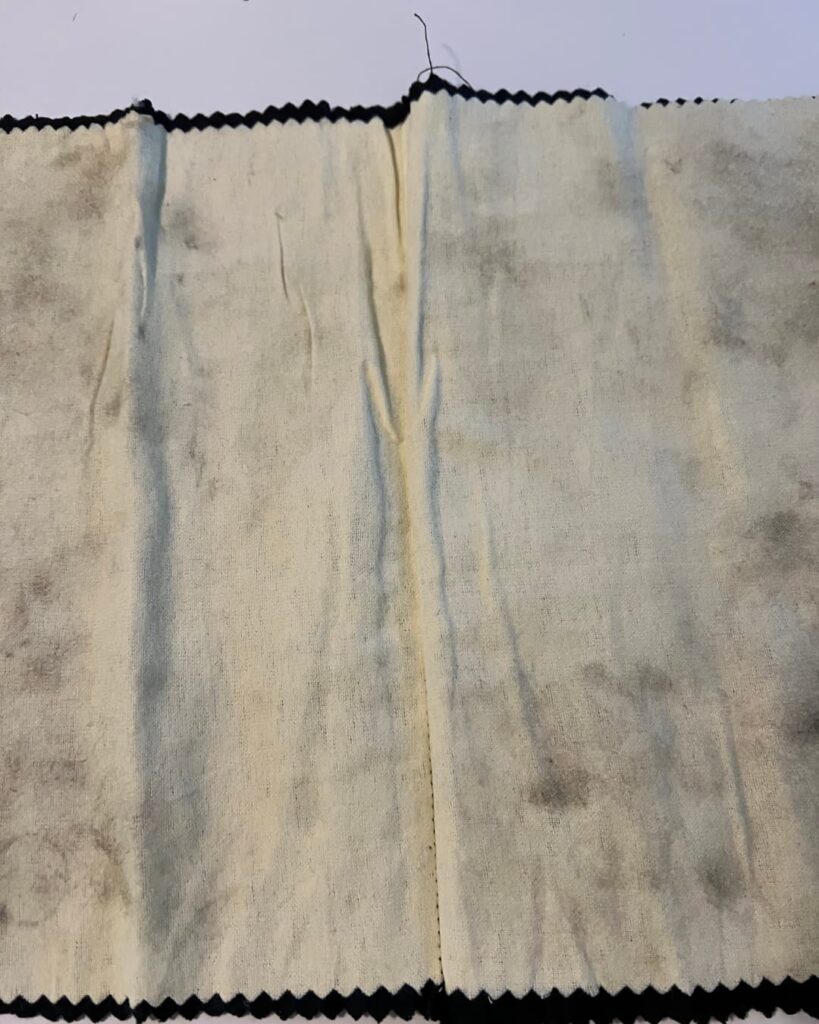Imagine you find your dream flute and get the perfect sound on it. But after a few months, you notice black spots, or tarnish, starting to appear.
One of the best ways to prevent that is to use anti-tarnish strips.
The strips sit in your case and have chemicals that soak up the chemicals that cause tarnish. You can then focus on playing your instrument knowing it will look new for a long time.
What Are Anti-Tarnish Strips?
Anti-tarnish strips are small strips that feel like paper or plastic. However, the material can absorb pollutants, such as sulfides. That helps protect your flute from things that can cause tarnish, which is where your flute may turn black or brown.
They’re useful for your main flute or any backup flutes you have. You don’t have to worry about polishing your flute or paying a flute technician to remove the tarnish.
Many tarnish strip brands are affordable as well. You can get a ton of strips to keep on hand and give them out to your friends or students who need them.

How to Use Anti-Tarnish Strips on the Flute
I keep a couple of small anti-tarnish strips in the case with my silver flute. If I remember right, my flute tech cut the strips down to size to fit underneath the instrument.
You can cut the strips, but many strips are thin enough to fit already. I’d recommend storing the strips under your flute so that they don’t get in the way. You’ll be able to take your flute in and out of your case easily.
Once you place the strip in your case, you don’t have to do anything. As you store your flute in its case, the strips can help protect against tarnish.
When to Replace Anti-Tarnish Strips
Unfortunately, anti-tarnish strips won’t work forever.
After around six months, the strips can start to lose their efficacy. Some strips may last as long as a year.
However, you should replace the anti-tarnish strips when they start to change color. Most strips are black, so whenever that changes, toss the current strips from your case and add new ones.
Since many anti-tarnish strips come in packs, you can keep the extras for two years or so. Be sure to keep the extras in a bag and tightly close the seal. Then, you’ll have six months from when you remove a strip to use it with your flute.
Why Is There Brown Stuff on My Flute?
Brown stuff on your flute is usually a sign of tarnish. The silver in your instrument reacts with other chemicals in the air, and the flute can turn brown.
Do Anti-Tarnish Strips Work?
Anti-tarnish strips can work well for flutes. Some parts of the flutes are hard to reach with a polishing cloth, such as between the keys.
Now, you should replace the strips twice a year to get the best results. If you notice a bit of tarnish forming, swap out the strips. You can also take your flute to a technician to remove the tarnish.

Should You Use Silver Polish on a Flute?
You shouldn’t use silver polish on a flute unless you’re a flute technician. Us players and teachers don’t have the training to safely use silver polish or any other liquid near the instrument.
If the problem is bad, you might be able to use a bit of liquid on the headjoint. However, you should keep it from getting on the inside. If that happens, the polish could seep into the headjoint cork and mess with its seal, requiring professional repairs.
When you use silver polish on the body, it could get on the pads. That can keep the pads from sealing well, so you’d need to hire a professional to replace them.
Cleaning Cloth
A similar option that I would recommend is to use something like a Blitz cloth.

I’ve used one on my silver flute, and it helps remove fingerprints, dirt, and even a bit of tarnish. But the cloth is dry, so you don’t have to worry about messing up the mechanism or pads.
If you happen to have a gold flute, you can use a Blitz cloth. However, I’d definitely avoid silver polish since the two metals are quite different.
I have a gold-plated flute, and I haven’t used anything to protect it from polish.
How Do You Keep a Flute From Tarnishing?
To keep a flute from tarnishing, you need to keep from exposing it to sulfides and similar chemicals.
However, that can be difficult when it comes to playing the flute.
An easy option is to use anti-tarnish strips that can attract sulfides. They’ll draw those chemicals away from your flute to reduce the chances of tarnish developing.
When Not to Use Anti-Tarnish Strips
Anti-tarnish strips are easy to set up, so they work well for most players. However, they aren’t necessary for every flute.
For example, if you’re lucky enough to get a 24k gold flute, it’s solid gold. The metal won’t tarnish, so there’s no reason to protect against that.
Even higher karat flutes, such as 14k and 18k might not need anti-tarnish strips.
Now if the gold is a lower karat, it usually contains some silver or copper, so you can use anti-tarnish strips. Those alloys won’t tarnish as easily as silver, but they can still develop tarnish.
Where to Buy Anti-Tarnish Strips
If you want to test out anti-tarnish strips, I say you should go for it. However, you should consider where to buy the best ones.
Here are a few options I’d recommend.
Online
Of course, the easiest option is to go to Amazon or another online retailer.
You can find strips or even small tabs, which I think would be perfect for a flute case.
A lot of the strips come in packs of 10 or even 100 strips. The larger packs are good for flute teachers who want to distribute the strips to students.
Most players can get away with a smaller pack since they won’t use up all of the strips before they stop working well.
Flute Shops
I’d also recommend looking at the websites or physical locations of flute stores.
My favorite options include Carolyn Nussbaum Music Company and Flute World.
Once again, you can get a pack of anti-tarnish strips. I love that some of the product options from flute stores are cut to fit your flute case. That way, you don’t have to prep them at all before you use the strips.
Jewelry Stores
If you need to go jewelry shopping, you can look for anti-tarnish strips there. Especially if the store carries a lot of silver items, they may have what you need.
I’ve never bought anti-tarnish strips this way, but it’s an option. Then, you won’t have to go to another shop if you already need to visit a jeweler.
Your Flute Tech
As I mentioned, my flute tech included my current set of anti-tarnish strips. I took the flute to her for maintenance, and she removed the tarnish and did some other stuff.
If your flute needs maintenance, ask your technician if they have anti-tarnish strips. They might have some overstock, so they can place one or two in your case. Then, you won’t have to buy a ton only to have some go to waste.
Will You Use Anti-Tarnish Strips?
Anti-tarnish strips can come in very handy for some flute players. If your flute tends to tarnish easily, you may be tired of the look and of paying for a repair tech to remove the tarnish.
Fortunately, you can prevent tarnish from building up in the future.
Just cut an anti-tarnish strip and place it in your case. Then, it can protect your flute and keep it looking as good as you sound.
